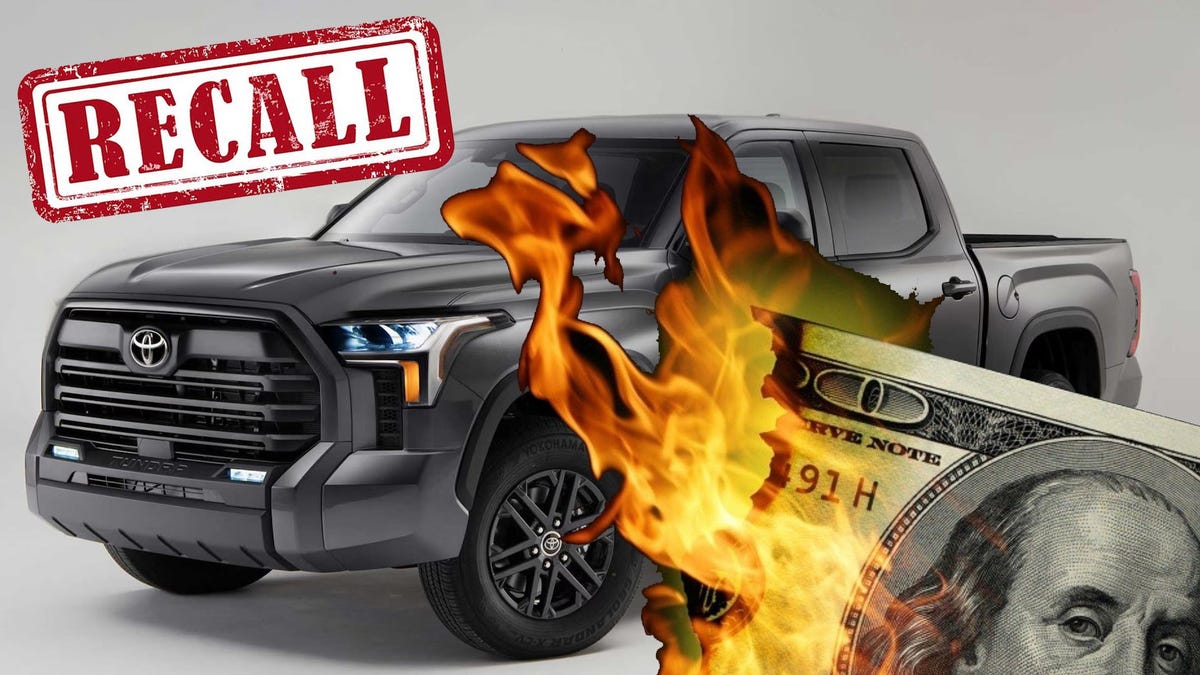Toyota’s recall targets engine replacements for 100,000 Tundra trucks and Lexus SUVs
There are minor safety recalls, and then there are significant, costly recalls. Currently, Toyota is facing the latter. Earlier this year, the company found a defect in the twin-turbocharged V-6 engines used in its Tundra pickups and Lexus LX SUVs. This problem affects 2022 to 2023 models manufactured between November 2021 and February 2023 (and some LX models made from July 2021 to November 2022). The defect can lead to unexpected engine stalls, as noted in Toyota’s National Highway Traffic Safety Administration (NHTSA) recall notices:
“There may be remnants of machining debris in the engine from production. For the affected vehicles, this can result in engine knocking, rough operation, failure to start, or loss of power while driving. A loss of power at high speeds raises the risk of accidents.”
In May 2024, when Toyota informed NHTSA about the issue, they stated that a solution for the 102,092 potentially impacted vehicles was still underway. Initially, Toyota estimated that only 1% of these vehicles might actually have the problem, but this figure stemmed from a requirement in NHTSA’s filing process. According to their documentation, Toyota simply entered “1” since they couldn’t provide a clearer estimate. The value “1” thus indicates ‘unknown’ status regarding the defect’s presence.
Two months later, Toyota still could not determine the number of affected Tundras and LX models, so they’ve decided to take decisive action by replacing every potentially impacted engine, as reported by Automotive News. (We’ve reached out to Toyota for confirmation on this solution and will update the article when we receive a response.) Currently, this engine replacement only pertains to the non-hybrid versions of the V35A twin-turbocharged 3.4-liter V-6 engines; the hybrid models (available in the Tundra) are designed to provide power even if there’s an engine failure, thanks to their electric motors.
The investigation into this issue began for Toyota in March 2022, spurred by reports of a customer vehicle stalling. After determining that the main bearings had seized, they received more reports of similar incidents and continued investigating to find the cause throughout 2023. Ultimately, they discovered that stray machining debris was to blame, leading them to initiate a voluntary recall after receiving a total of 166 Field Technical Reports and 824 warranty claims related to the engines.
The process of removing and replacing the engines in over 100,000 vehicles (approximately 98,600 Tundras and 3,500 LX SUVs) will be incredibly costly for Toyota. This includes the expenses of the engines themselves, labor, and possibly losing production capacity for new engines meant for upcoming vehicles while they work on replacements for this recall. Nevertheless, Toyota deserves recognition for implementing a safe and thorough remedy for an issue that could either affect only a few vehicles or potentially many more. Owners will receive notifications by the end of this month regarding the recall.

